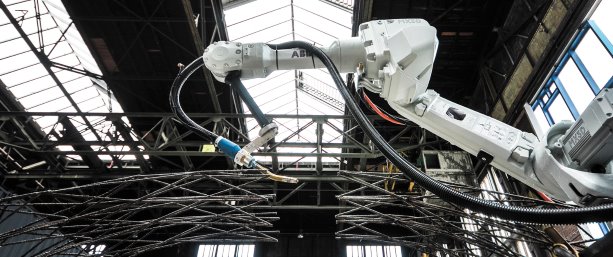Helen Goodland, Brantwood Consulting principal, and an advisor to the BC Construction Association on innovation and sustainability, says the increasing use of work place technology will bring more change to the Canadian construction industry.
"The whole economic model will shift," she said.
"It will require a transition to a more skilled work force in the future."
Goodland says the construction industry will need to match technology with its workers on-site.
"In Europe, all workers on-site must be skilled or the general contractor will be fined," she said. "In Canada, more skilled workers will probably mean the industry will need to pay more."
Goodland says there are a number of emerging trends that will have a significant impact on the construction work place.
"There is an increasing move to get as much done off-site as possible," she said. "An increasing number of suppliers are pre-assembling parts of a project, putting them into a big box and delivering it to the job site. Ten to 20 years from now, the average construction site will be a simpler, calmer, quieter and less messy place."
Goodland says another trend is the increasing use of digital technologies, especially in Europe.
For example, a Dutch company has plans to build the world’s first 3D-printed bridge across an Amsterdam canal.
The plan involves robotic arm printers "walking" across the canal as it slides along the bridge’s edges, printing its own support structure seemingly out of thin air as it moves along.
Goodland says that, as construction becomes more and more complex, the Canadian industry should develop "an established mechanism" for it to invest in research and development (R&D), like there is in the U.S. and Europe.
"Most Canadian construction companies are too small to invest significantly in construction research and development," said Goodland. "And government needs to invest more in new technology and other work place innovation."
Division 15 Mechanical Ltd in Surrey, B.C. installs district energy systems for municipalities and universities, and mechanical systems for general contractors.
It does it with the aid of BIM [Building Information Modeling] software, instead of assembling its systems piece by piece in the field.
"Our company is an early BIM adopter," said president and CEO Bob Cooke.
"We have a BIM department with five BIM engineers who do detailed design for pre-fabrication."
Cooke says BIM saves time and reduces the number of mistakes that are made.
"That consideration will become more important as labor becomes harder to come by," he said. "Unfortunately, the construction industry in Canada has so far been slow to adapt BIM."
Division 15 builds its mechanical systems in a 4,000-square-foot fabrication plant and equips its installation foremen with iPods and software that can read BIM files.
Pre-fabrication has been so successful for Division 15 that it is expanding its plant from 4,000 square feet to 20,000 square feet.
CutMyTimber Inc. is another company that is making good use of digital technology.
Founded five years ago in North Vancouver, and now with facilities in the western United States as well as Canada, the company turns data into timber by modeling and cutting mass timber to specification and shipping it to builders and owners on both sides of the border.
The company says it manufactures any kind of residential or commercial project designed with timber, glulam or hybrid materials.
"We use CAD/CAM software and a Hundegger mass timber fabrication machine that is manufactured in Germany," said CutMyTimber partner Greg Howes.
The company may be high in technology, but it is low in full-time employees. "We work with a network of partners and subcontractors in the supply chain," said Howes.
Mass timber manufactured with the assistance of the latest hardware and software has considerable benefits for the company’s customers, he says.
"It’s fast, reliable, predicable and 100-percent scalable," Howes said. "In addition, because our process requires less transportation, we leave a smaller carbon footprint."
Clint Undseth, vice-president of innovation at Stuart Olson in Richmond, B.C., says there’s room for Canadian construction to improve in its adoption of technology and innovation.
Undseth says construction innovation has three principle components: building performance, off-site prefabrication and collaboration between stake-holders.
"There’s an opportunity to improve through collaboration," he said. "Investors in building projects and the construction industry need to work together so the assets that get built perform better."
Undseth says that, like technology, building performance has a number of components: financial, resource management, comfort of the building occupants and global responsibility.
"Investors want their assets to perform better, and the efficient use of the latest technologies is key to better performance," he said.

MX3D has plans to build the world’s first 3D-printed canal bridge using the above multi-axis robot. The bridge would span over a canal in Amsterdam.
Photo: MX3D"










Recent Comments
comments for this post are closed